Technical Assistance, Social Practices, and Resilience in Social Housing: An Overview of the Current Scientific Literature
Abstract
1. Introduction
- Institutionalized and explicit rules: Refers to institutional policies and regulations, written instructions, or any knowledge that influences understanding of specific practices.
- Capabilities (know-how) and habits: Includes the abilities and skills that professionals possess or have acquired regarding how to conduct certain practices; this pertains to acting/know-how.
- Engagement: Motivation, social expectations, inspirations, objectives, and beliefs that guide attitudes and practices.
- Things: Refers to the intrinsic characteristics of objects in the built environment and how they influence attitudes and practices.
2. “[REFORMA] na Palma da mão” (“Handy Home Improvements”) Platform
Platform Structure
3. Analysis of Similar Initiatives
4. Literature Review Methodology
- Stage 1—Search strategy;
- Stage 2—Database consultation;
- Stage 3—Document selection;
- Stage 4—Document portfolio.
5. Results
5.1. Social Housing (SH)
5.2. Technical Assistance for Social Housing (TASH)
5.3. Social Practices
6. Conclusions
Author Contributions
Funding
Acknowledgments
Conflicts of Interest
References
- FJP-Fundação João Pinheiro. Déficit Habitacional no Brasil. 2024. Available online: https://fjp.mg.gov.br/deficit-habitacional-no-brasil/ (accessed on 7 June 2024).
- Brasil. 2024. Available online: https://www.gov.br/planalto/pt-br/acompanhe-o-planalto/noticias/2024/04/minha-casa-minha-vida-entidades-e-rural-selecionam-mais-de-112-mil-unidades-habitacionais#:~:text=RETOMADA%20-%20Desde%20sua%20cria%C3%A7%C3%A3o%2C%20em%202009%2C%20o,de%20novas%20unidades%20habitacionais%20em%20todo%20o%20Brasil. (accessed on 25 June 2024).
- Balbim, R.; Krause, C.; Cunha, L.F.B.D.; Santiago, C.D. Inadequações Habitacionais: Dimensão e Custos Para Sua Solução Com base em Experiências de Melhorias Habitacionais; IPEA: Rio de Janeiro, Brazil, 2024; (Diur: Nota Técnica, 51). [Google Scholar]
- Villa, S.B.; Bortoli, K.C.R.; Vasconcellos, P.B.; Parreira, F.V.M.; Araújo, G.M.; Braga, T.H.C.; Moraes, R.A.; Oliveira, M.N.; Oliveira, N.F.G.; Barbosa, M.C.R.; et al. BER HOME-Resiliência no Ambiente Construído em Habitação Social: Métodos de Avaliação Tecnologicamente Avançados; PPGAU, FAUED, Universidade Federal de Uberlândia: Uberlândia, Brazil, 2022. [Google Scholar]
- Rufino, M.B. Um olhar sobre a produção do PMCMV a partir de eixos analíticos. In Minha Casa… e a Cidade, 1st ed.; Amore, C.S., Shimbo, L.Z., Rufino, M.B.C., Eds.; Letra Capital: Rio de Janeiro, Brazil, 2015. [Google Scholar]
- Vasconcellos, P. Co-Produzindo Resiliência em Habitação de Interesse Social: Como Ampliar a Resiliência Através do Engajamento? Master’s Thesis, Universidade Federal de Uberlândia, Uberlândia, Brazil, 2019. Available online: https://repositorio.ufu.br/handle/123456789/29145 (accessed on 19 November 2023).
- Villa, S.B.; BortolIi, K.C.R.; Vasconcellos, P.B. Assessing the built environment resilience in Brazilian social housing: Challenges and reflections. Caminhos Geogr. 2023, 24, 293–312. [Google Scholar] [CrossRef]
- Villa, S.B.; Ornstein, S.W. Qualidade Ambiental na Habitação: Avaliação Pós-Ocupação, 1st ed.; Editor Oficina de Textos: São Paulo, Brazil, 2013; p. 387. [Google Scholar]
- Oliveira, M.N. Eficiência Energética Como Atributo da Resiliência na Habitação de Interesse Social: Avaliação e Proposição de Estratégias Para Reformas e Intervenções. Master’s Thesis, Universidade Federal de Uberlândia, Uberlândia, Brazil, 2022. [Google Scholar] [CrossRef]
- Pickett, S.T.A.; McGrath, B.; Cadenasso, M.L.; Felson, A.J. Ecological resilience and resilient cities. Build. Res. Inf. 2014, 42, 143–157. [Google Scholar] [CrossRef]
- ONU—Organização das Nações Unidas. Agenda 2030 Para o Desenvolvimento Sustentável. 2015. Available online: https://brasil.un.org/pt-br/sdgs (accessed on 7 June 2024).
- Bridi, M.E.; de Prado, C.N.A.; Granja, A.D.; Szymanski, L.; Kowaltowski, D.C.C.K. Identificação de oportunidades melhorias em habitações sociais existentes na primeira etapa de um Living Lab durante a pandemia da COVID-19. Ambiente Construído 2023, 23, 93–111. [Google Scholar] [CrossRef]
- Curta, C.C. Assistência Técnica Como Política Pública Habitacional; ArchDaily: Santiago, Chile, 2019; Available online: https://www.archdaily.com.br/br/924763/assistencia-tecnica-como-politica-publica-habitacional (accessed on 14 November 2023)ISSN 0719-8906.
- Garrefa, F.; Villa, S.B.; Bortoli KC, R.D.; Stevenson, F.; Vasconcellos, P.B.; Carvalho, N.L.D.M. Final report—Co-producing healthy communities: Backyard retrofit to prevent arboviruses epidemics in Brazilian social housing developments. In Global Challenges Research Fund (Research Report); UFU/PPGAU/FAUED: Santa Mônica, Brazil; TUoS/SSoA: Uberlândia, Brazil, 2021; Available online: https://morahabitacao.files.wordpress.com/2021/09/1-final-report_28.8.21.pdf (accessed on 1 March 2024).
- Gram-Hanssen, K. Standby Consumption in Households Analyzed with a Practice Theory Approach, Research and Analysis. J. Ind. Ecol. 2010, 14, 150–165. [Google Scholar] [CrossRef]
- Ono, R.; Ornstein, S.W.; Villa, S.B.; França, A.J.G.L. Avaliação Pós-Ocupação (APO) na Arquitetura, no Urbanismo e no Design: Da Teoria à Prática; Oficina de Textos: São Paulo, Brazil, 2018. [Google Scholar]
- Planalto gov.br—Plataforma do Governo Federal. Brasília. Available online: https://www.gov.br/planalto/pt-br/acompanhe-o-planalto/noticias/2023/02/conhecas-algumas-das-principais-caracteristicas-do-novo-minha-casa-minha-vida (accessed on 13 November 2023).
- Brasil. Lei Federal n0 11.888. 24 Dez. 2008. Assegura às Famílias de Baixa Renda Assistência Técnica Pública e Gratuita para o Projeto e a Construção de Habitação de Interesse Social e Altera a Lei n0 11.124, de 16 de Junho de 2005. Brasília, 24 de Dezembro de 2008. Available online: https://www.planalto.gov.br/ccivil_03/_ato2007-2010/2008/lei/l11888.htm (accessed on 14 January 2025).
- Andrade, M.F.; Meyer, J.F.P. Revisão bibliográfica sobre ATHIS: Reflexões sobre um sistema único de habitação. In Proceedings of the Conferência Internacional da LARES, São Paulo, Brazil, 18 October 2023. [Google Scholar]
- Nielsen Norman Group, 31 July 2016. Available online: https://www.nngroup.com/articles/design-thinking/ (accessed on 20 December 2024).
- Ferenhof, H.A.; Fernandes, R.F. Demystifying the literature review as basis for scientific writing: SSF Method. Revista ACB 2016, 21, 550–563. [Google Scholar]
- Eloy, C.M.; Hernandez, F.J.R.; Espinosa, J.A.G.; Bautista, J.J.C.; Amero, L.I.J.T.; Nardoni, R. Construindo oportunidades: Panorama 2020 e foco em desafios prioritários. In Habitação de Interesse Social Brasil; Cadernos de Coletânea 1; IADB Inter-American Development Bank: Washington, DC, USA, 2021. [Google Scholar]
- Castano, R.; Sofie, P.; Heini, J.; Jenni, P.; Lassi, T.; Anahita, R.; Saija, T. Resilience in the built environment: Key characteristics for solutions to multiple crises. Sustain. Cities Soc. 2022, 87, 104259. [Google Scholar] [CrossRef]
- Muianga, E.A.D.; Kowaltowski, D.C.C.K. A panorama of Brazilian social housing research: Scope, gaps and intersections. Ambiente Construído 2024, 24, e130925. [Google Scholar] [CrossRef]
- Araujo, G.M.; Villa, S.B. A relação entre bem-estar e resiliência na habitação social: Um estudo sobre os impactos existentes. Ambiente Construído 2020, 20, 141–163. [Google Scholar] [CrossRef]
- Muianga, E.A.D.; KnatzKowaltowski, D.C.C.; da Silva, V.G.; Granja, A.D.; Moreira, D.d.C.; Ruschel, R.C. Housing transformations and their impacts on the well-being of dwellers. Ambiente Constr. 2022, 22, 255–274. [Google Scholar] [CrossRef]
- Garrefa, F.; Villa, S.B.; de Bortoli, K.C.R.; Stevenson, F.; Vasconcellos, P.B. Resilience in social housing developments through post-occupancy evaluation and co-production. Ambiente Constr. 2021, 21, 151–175. [Google Scholar] [CrossRef]
- Villa, S.B.; Pezzato, L.M.; Souza, A.R.; Lima, R.B.F. Ampliando a resiliência de moradias sociais através de práticas de assistência técnica: O caso do bairro shopping park em Uberlândia-MG. In Proceedings of the Encontro Nacional de Tecnologia do Ambiente Construído, Maceió, Brazil, 4–6 November 2020; pp. 1–9. Available online: https://eventos.antac.org.br/index.php/entac/article/view/900 (accessed on 4 July 2024). [CrossRef]
- Villa, S.B.; Stevenson, F.; Garrefa, F.; Bortoli, K.C.R.; Carvalho, N.L.M. Innovating digital POE platforms during the COVID-19 pandemic: A case study of co-production in Brazilian social housing. Front. Built Environ. 2023, 9, 1059044. [Google Scholar] [CrossRef]
- Sales, L.P.O. Habitação de Interesse Social, Avaliar é Preciso: Um Estudo de Caso no Condomínio Residencial Cidadão Manauara 2, Etapa, A. Master’s Thesis, Universidade Federal do Amazonas, Manaus, Brazil, 2023. [Google Scholar]
- Martin, S.B.C.; Villa, S.B. Resiliência e Habitação Social para Renda: Uma Revisão Sistemática da Literatura para a conferência ENTAC2022. In Proceedings of the XIX Encontronacional de Tecnologia do Ambiente Construído, Porto Alegre, Brazil, 9–11 November 2022; pp. 1–15. [Google Scholar]
- Bortoli, K.C.R. Resiliência e Conforto Térmico em Habitação de Interesse Social Horizontais em Uberlândia (MG): Avaliação para Orientação de Reformas. Ph.D. Thesis, Universidade Federal de Uberlândia, Uberlândia, Brazil, 2023; 351p. Available online: https://repositorio.ufu.br/handle/123456789/39335 (accessed on 14 January 2025).
- Bortoli, K.C.R.; Villa, S.B. Conforto ambiental coo atributo para a resiliência em habitações de interesse social brasileiras. Rev. Proj. 2023, 5, 126–140. [Google Scholar]
- Nieto, V.B.; Tibério, G.C. Avaliação Pós-ocupacional do conforto térmico em habitação social a partir da resiliência: Uma revisão sistemática. Semin. Arquitetura Urban. 2022, 11, 12e13. [Google Scholar]
- Simões, G.M.F.; Leder, S.M.; Labaki, L.C. How uncomfortable and unhealthy can social (low-cost) housing in Brazil become with use? Build. Environ. 2021, 205, 108218. [Google Scholar] [CrossRef]
- Ferreira, I.P.; Leite, T.R.; de Faria, J.R.G.; de Castro Fontes, M.S.G. Abordagens metodológicas de estudo de conforto térmico em habitações de interesse social. In Proceedings of the Encontro Nacional de Conforto no Ambiente Construído, São Paulo, Brazil, 30 October–1 November 2023; pp. 1–10. [Google Scholar] [CrossRef]
- Moraes, A.R. Avaliação da Relação Entre Ampliabilidade e Consumo Energético em Habitação de Interesse Social: Atributos Facilitadores da Resiliência. Master’s Thesis, Universidade Federal de Uberlândia, Uberlândia, Brazil, 2021. [Google Scholar] [CrossRef]
- Oliveira, M.N.; Villa, S.B. Eficiência Energética e Comportamento Consciente na Resiliência em Habitação de Interesse Social. In Anais do Simpósio Brasileiro de Qualidade de Projeto do Ambiente Construído; UEL: London, UK, 2021. [Google Scholar]
- Oliveira, M.N.; Villa, S.B. Resilience Ruler for energy efficiency: An evaluation of social housing refurbishment. Int. J. Sustain. Dev. Plan. 2023, 18, 3363–3372. [Google Scholar] [CrossRef]
- Parreira, F.V.M. Estratégias de Flexibilidade Orientadas ao Usuário Como Facilitador da Resiliência em Habitação de Interesse Social. Master’s Thesis, Universidade Federal de Uberlândia, Uberlândia, Brazil, 2020. [Google Scholar] [CrossRef]
- Parreira, F.V.M.; Villa, S.B. Resiliência na habitação social: Avaliação dos impactos relacionados a sua (in)flexibilidade. In Proceedings of the IV Encontro da Associação Nacional de Pesquisa e Pós-Graduação em Arquitetura e Urbanismo (ENANPARQ), Brasília, Brazil, 12–16 October 2021. [Google Scholar]
- Montellano, A.S. Uso y Percepción de las Viviendas Flexibles de Aranguren y Gallegos en Carabanchel. Inf. Constr. 2022, 74, e450. [Google Scholar] [CrossRef]
- Oliveira, L.V. Avaliação dos Impactos da COVID-19 na Habitação Social e Suas Adaptações Para um Ambiente Construído Mais Resiliente. Master’s Thesis, Universidade Federal de Uberlândia, Uberlândia, Brazil, 2023. [Google Scholar] [CrossRef]
- Oliveira, L.V.; Villa, S.B. Os impactos da COVID-19 nas habitações: Uma revisão da literatura sobre adaptações, resiliência e flexibilidade. In Proceedings of the Encontro Nacional de Tecnologia do Ambiente Construído—ENTAC 2022, Canela, Brazil, 9–11 November 2022; Available online: https://eventos.antac.org.br/index.php/entac/article/view/2098 (accessed on 14 January 2025).
- Villa, S.B.; Vasconcellos, P.V.; Bortoli, K.C.R.; Araújo, L.B. Lack of adaptability in Brazilian social housing: Impacts on residentes. Build. Cities 2022, 3, 376–397. [Google Scholar] [CrossRef]
- Enobog, B.E.; Eziyi, O.I.; Oluwole, A.A. A conceptual framework for evaluating public housing for resilience to rapid population growth. IOP Conf. Series Earth Environ. Sci. 2021, 655, 012088. [Google Scholar] [CrossRef]
- Simões, G.M.F.; Leder, S.M. Mais espaço, por favor: Adaptações espaciais (reformas) e o impacto na habitabilidade de Habitações Sociais. Ambiente Construído 2022, 22, 7–29. [Google Scholar] [CrossRef]
- Villa, S.B.; Carneiro, G.P.; Moraes, R.A.; Carvalho, N.L.d.M. Reflexões sobre os impactos da pandemia de COVID-19 no espaço doméstico. Gestão Tecnol. Proj. 2021, 16, 67–83. [Google Scholar] [CrossRef]
- Moraes, R.A.; Villa, S.B. Ampliabilidade e gasto energético em his: Estratégias orientadas ao usuário para moradias mais resilientes. In Proceedings of the Encontro Nacional de Tecnologia do Ambiente Construído, Porto Alegre, Brazil, 4–6 November 2020. [Google Scholar] [CrossRef]
- Braga, T.H.C. Resiliência e Acessibilidade de Moradias de Interesse Social Impactadas Pelo Envelhecimento de Seus Moradores. Master’s Thesis, Faculdade de Arquitetura e Urbanismo e Design, Universidade Federal de Uberlândia, Uberlândia, Brazil, 2021. [Google Scholar]
- Villa, S.B.; Bortoli, K.C.R.; Oliveira, N.F.G. Resiliência no ambiente construído em habitação social: Métodos digitais de avaliação pós-ocupação. In Proceedings of the VI Encontro da Associação Nacional de Pesquisa e Pós-Graduação em Arquitetura e Urbanismo (ENANPARQ), Brasília, Brazil, 12–16 October 2020. [Google Scholar]
- Villa, S.B.; Burigo, R.; Saramago, R.d.C.P. Uma Breve revisão da literatura integrada sobre avaliação pós-ocupação e qualidade ambiental. In Proceedings of the Simpósio Brasileiro de Qualidade de Projeto do Ambiente Construído, Pelotas, Brazil, 17–18 November 2023; Volume 8. [Google Scholar] [CrossRef]
- Neta, E.D.S.; de Oliveira, T.D.; Brum, C.M.; Porta, P.G.D.; Rauber, V.A.L.G. Avaliação pós ocupação APO: Conexões entre o ambiente construído, comportamento humano e cidadania. PIXO-Rev. Arquitetura Cid. Contemp. 2022, 6, 200–211. [Google Scholar] [CrossRef]
- Elsayed, M.; Pelsmakers, S.; Pistore, L.; Castaño-Rosa, R.; Romagnoni, P. Post-occupancy evaluation in residential buildings: A systematic literature review of current practices in the EU. Build. Environ. 2023, 236, 110307. [Google Scholar] [CrossRef]
- Lolli, F.; Marinello, S.; Coruzzolo, A.M.; Butturi, M.A. Post-occupancy evaluations (POE) applications for improving indoor environment quality (IEQ). Toxics 2022, 10, 626. [Google Scholar] [CrossRef] [PubMed]
- Maslova, S.; Burgess, G. Delivering human-centred housing: Understanding the role of post-occupancy evaluation and customer feedback in traditional and innovative social housebuilding in England. Constr. Manag. Econ. 2022, 41, 277–292. [Google Scholar] [CrossRef]
- Vecchia, L.F.D.; Medvedovski, N.S. Social Housing Customization in Brazil. Encyclopedia 2021, 1, 589–601. [Google Scholar] [CrossRef]
- Silveira, C.R.; Moraes, L.M. Efficiency of post-occupancy assessment in housing complexes. Res. Soc. Dev. 2021, 10, e6410716256. [Google Scholar] [CrossRef]
- Milion, R.N.; Alves, T.d.C.L.; Paliari, J.C.; Liboni, L.H.B. CBA-Based Evaluation Method of the Impact of Defects in Residential Buildings: Assessing Risks towards Making Sustainable Decisions on Continuous Improvement Activities. Sustainability 2021, 13, 6597. [Google Scholar] [CrossRef]
- Sousa, I.G.; de Almeida, J.G. Avaliação pós-ocupação do residenciais pitangueiras, um conjunto habitacional do programa ‘minha casa minha vida’ no maranhão. Eng. Urbana Debate 2021, 2, 124–138. [Google Scholar] [CrossRef]
- Silveira, C.R. Avaliação Pós-Ocupação do Ambiente Construído no Bairro Cidade Jardim I, no Município de Jataí-Goiás. Master’s Thesis, Pontifícia Universidade Católica de Goiás, Escola de Direito, Negócios e Comunicação, Goiânia, Bzasil, 2022. Available online: http://tede2.pucgoias.edu.br:8080/handle/tede/4798 (accessed on 14 January 2025).
- Wanderley, B.C.; de Fonseca, D.B.C. Post occupancy evaluation of Vila São Pedro state housing in the lagoon shore of Maceió –AL. Braz. J. Dev. 2021, 7, 33071–33089. [Google Scholar] [CrossRef]
- Barreiros, W.C.F.; Côrtes, E.M. Retrato da Athis em alguns dos municípios brasileiros atendidos pela Defensoria Pública da União. Rev. Def. Pública União 2022, 17, 53–68. [Google Scholar] [CrossRef]
- Cardoso, F.S.; Lopes, J.M.d.A. Assessoria e Assistência Técnica para Habitação de Interesse Social: Do discurso à construção da prática profissional. Rev. Bras. Estud. Urbanos Reg. 2022, 24, e202210. [Google Scholar] [CrossRef]
- Garcia, T.B.; Shimbo, L. As Distintas Origens das Práticas da Arquitetura no Campo da Moradia Popular no Brasil; ENANPUR: Belém, Brazil, 2023. [Google Scholar]
- Gonzalez, L.L.M. Assessoria e Assistência Técnica no Rio de Janeiro: Reflexão Crítica Sobre a Práxis. Master’s Thesis, Faculdade de Arquitetura e Urbanismo da Pontifícia, Universidade Católica do Rio de Janeiro, Rio de Janeiro, Brazil, 2023. [Google Scholar]
- Villa, S.B.; Funari, P.V. Metodologia de assistência técnica em habitação de interesse social: Desenvolvimento e aplicação em estudo de caso. Rev. Proj.-Proj. Percepção Ambiente 2022, 7, 99–115. [Google Scholar] [CrossRef]
- De Almeida, S.S.; Pompermayer, R.d.S.; de Souza, M.C.; Franco, M.L.; Almeida, I.C.; Barros, G.F.; Alves, W.M.; da Costa, A.S.V.; Higuchi, A.K.; Santos, E.A.; et al. Federal Law 11.888 and free technical assistance for the housing project in the municipality of Teófilo Otoni-MG. Res. Soc. Dev. 2021, 10, e4210413866. [Google Scholar] [CrossRef]
- Vieira, A.A.; Bastos, T.P. Housing for low-income families: Strategies for implementing free public assistance. Res. Soc. Dev. 2020, 9, e167973770. [Google Scholar] [CrossRef]
- Batista, N.C.M.; Ferreira, L.I.C.; Damasceno, B.C.; Carvalho, D.O.; Silva, N.B.G. Pesquisa Ação e Extensão Universitária: Prática e Formação em Assessoria Técnica Pelo Direito a Moradia Em Áreas Centrais; ENANPUR: Belém, Brazil, 2023. [Google Scholar]
- Velasco, T. Habitação Como Direito Social: A Lei de ATHIS, Sua Aplicabilidade e Desafios; ENANPUR: Belém, Brazil, 2023. [Google Scholar]
- Ayoub, T.A.A.; Oliveira, F.F. ATHIS em Londrina-PR: Um projeto em construção. In Congresso Internacional de Política Social e Serviço Social: Desafios Contemporâneos; Seminário Nacional de Território e Gestão de Políticas Sociais; Congresso de Direito a Cidade e Justiça Ambiental; IAU-USP: Paris, France, 2022; Volume 4. [Google Scholar]
- Luca, N.T.; Zulo, L.S. Aplicação da Lei de Assistência Técnica Gratuita (11888/2008) em moradias precárias no município de Itaperuna/RJ. Rev. Café Com Sociologia. 2022, 11. [Google Scholar]
- Bastos, I.O. Moradia Adequada e Promoção de Saúde Através da ATHIS: Reflexões a Partir de Uma Experiência na Vila Brandinda, Campinas-SP. Master’s Thesis, PUC, Campinas, Brazil, 2023. [Google Scholar]
- Medvedovski, N.S.; Santiago, G.B.; Santos, L.A.; Tavares, B.B. A Lei de Assistência Técnica em Implementação: Modalidades de Atuação; UIA: Rio de Janeiro, Brazil, 2021; Volume 3. [Google Scholar]
- Parlato, S.; Santos, L.H.; Leitzke, R.K.; Cunha, E.G.; Medvedovski, N.S. Implementação da assistência técnica para melhorias habitacionais no loteamento Anglo (Pelotas/RS). In Proceedings of the ENANPRQ VI Encontro Nacional de Pesquisa e Pós-Graduação em Arquitetura e Urbanismo, Brasília, Brazil, 1–5 March 2021. [Google Scholar]
- Sombrio, C.M.O.; Zanoni, V.A.G. O atendimento das exigências dos usuários em obras de melhorias habitacionais. In Encontro Latino-Americano e Europeu Sobre Edificações e Comunidades Sustentáveis, 4; Universidade Federal da Bahia: Salvador, Brazil, 2022; Available online: https://repositorio.ufba.br/handle/ri/35359 (accessed on 14 January 2025).
- Matsunaga, M.K.; Takamatsu, P.H.T.; Silva, M.V. Análise das condições de conforto ambiental em residências do conjunto mestre Oscar Santos, macapá-AP. In O Projeto de Extensão Universitária Assistência Técnica em Arquitetura e Urbanismo da Unifap fase Mestre Oscar 2017–2018; Editor Uniedusul: Maringá, Brazil, 2020; pp. 63–80. [Google Scholar] [CrossRef]
- Parlato, S.; Santos, L.H.; Leitzke, R.K.; Cunha, E.G.; Medvedovski, N.S. Melhorias termo-energéticas em habitações de interesse social: Implementação da assistência técnica em assentamentos precários. Encontro Nac. Tecnol. Ambiente Constr. 2020, 18, 1–8. [Google Scholar] [CrossRef]
- Scotton, J.A.; Miron, L.I.G.; Lersch, I.M. Assistência técnica em habitação de interesse social para promoção do habitat saudável. Gestão Tecnol. Proj. 2021, 16, 85–100. [Google Scholar] [CrossRef]
- Paulichen, L. O Papel da Assessoria Técnica na Produção Coletiva de Habitação Social. Master’s Thesis, Faculdade de Engenharia Civil, Arquitetura e Urbanismo da Unicamp, Campinas, Brazil, 2021. [Google Scholar]
- Pereira, C.H.B.; Knatzkowaltowski, D.C.C.; Silva, V.G.D.A.; Muianga, E.A.; Monetti, E.H.N. Proposta de desenvolvimento de melhorias com processo participativo de uma unidade habitacional. In Proceedings of the Encontro Nacional de Conforto do Ambiente Construído-ENCAC, São Paulo, Brazil, 8–10 November 2023. [Google Scholar]
- Santos, B.; Pereira, D. Elaborando um Projeto de ATHIS Com Auxílio da Tecnologia BIM. Final Graduation Project, Pós-Graduação em Engenharia de Infraestrutura Urbana, Instituto Federal do Espírito Santo, Vitória, Brazil. 2021. Available online: https://repositorio.ifes.edu.br/handle/123456789/1662 (accessed on 14 January 2025).
- Vecchia, L.R.F.D. Sistema de customização em massa para a melhoria da qualidade projetual de ampliações de casas no contexto de HIS. Gestão Tecnol. De Proj. 2022, 17, 53–78. [Google Scholar] [CrossRef]
- Nascimento, J.T.S.; Yuba, A.N. Estudo Para Elaboração de Guia Prático para Assistência Técnica Privada em Habitação Social Para as Classes C e D. In Proceedings of the Encontro Nacional de Tecnologia do Ambiente Construído, Canela, Brazil, 9–11 November 2022; pp. 1–13. [Google Scholar]
- Santarsiero, G.; Misceo, M.; Aversa, P.; Candigliota, E.; Di Micco, A.; Hugony, F.; Manfredi, V.; Marghella, G.; Marzo, A.; Masi, A.; et al. Avaliação holística para reforma de habitação social: Integrando aspectos sísmicos, energéticos e sociais no projeto REHOUSE. Buildings 2024, 14, 3659. [Google Scholar] [CrossRef]
- Morgan, D.J.; Maddock, C.A.; Musselwhite, C.B. These are tenants not guinea pigs: Barriers and facilitators of retrofit in Wales, United Kingdom. Energy Res. Soc. Sci. 2024, 111, 103462. [Google Scholar] [CrossRef]
- Azeez, T.; Nunes, R. Spatial Variation in Household Energy-Relevant Practices in Sub-Saharan Africa; SSRN: Atlanta, GA, USA, 2024; p. 46. [Google Scholar] [CrossRef]
- Piano, S.L.; Smith, S.T. Energy demand and its temporal flexibility: Approaches, criticalities and ways forward. Renew. Sustain. Energy Rev. 2022, 160, 112249. [Google Scholar] [CrossRef]
- Salvia, G.; Morello, E.; Rotondo, F.; Sangalli, A.; Causone, F.; Erba, S.; Pagliano, L. Performance Gap and Occupant Behavior in Building Retrofit: Focus on Dynamics of Change and Continuity in the Practice of Indoor Heating. Sustainability 2020, 12, 5820. [Google Scholar] [CrossRef]
- Bal, M.; Stok, F.M.; Van Hemel, C.; De Wit, J.B.F. Including Social Housing Residents in the Energy Transition: A Mixed-Method Case Study on Residents’ Beliefs, Attitudes, and Motivation Toward Sustainable Energy Use in a Zero-Energy Building Renovation in the Netherlands. Front. Sustain. Cities 2021, 3, 656781. [Google Scholar] [CrossRef]
- Colombo, C.; Devenyns, A.; Ceinar, I.M.; Sendra, P. Co-Producing a Social Impact Assessment with Affected Communities: Evaluating the Social Sustainability of Redevelopment Schemes. Sustainability 2021, 13, 13381. [Google Scholar] [CrossRef]
- Malatesta, T.; Breadsell, J.K. Identifying Home System of Practices for Energy Use with K-Means Clustering Techniques. Sustainability 2022, 14, 9017. [Google Scholar] [CrossRef]
- Matschoss, K.; Laakso, S.; Heiskanen, E. What can we say about the longer-term impacts of a living lab experiment to save energy at home? Energy Effic. 2024, 17, 50. [Google Scholar] [CrossRef]
- Morgan, G.T.; Coleman, S.; Robinson, J.B.; Touchie, M.F.; Poland, B.; Jakubiec, A.; MacDonald, S.; Lach, N.; Cao, Y. Wellbeing as an emergent property of social practice. Build. Cities 2022, 3, 756–771. [Google Scholar] [CrossRef]

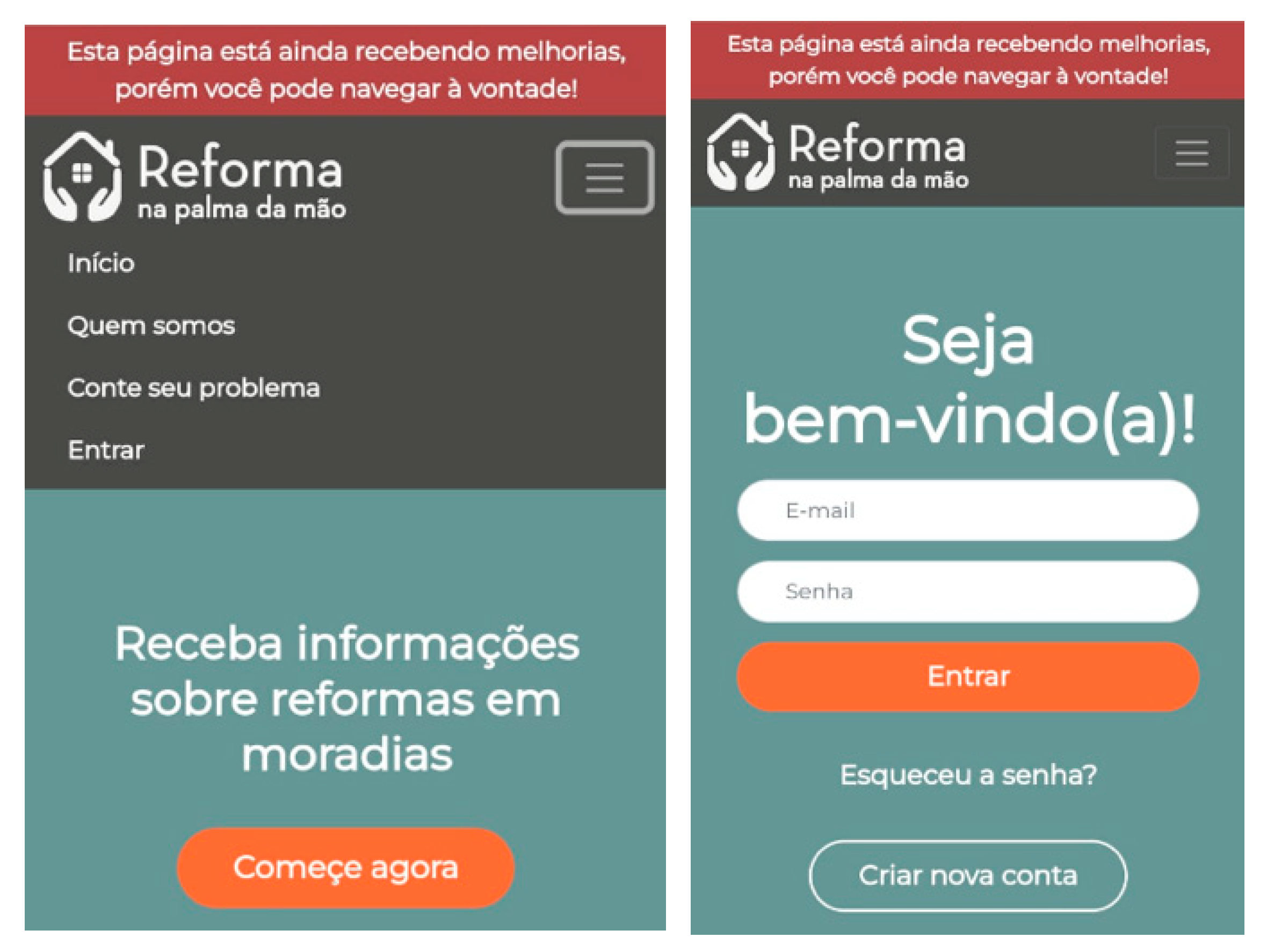
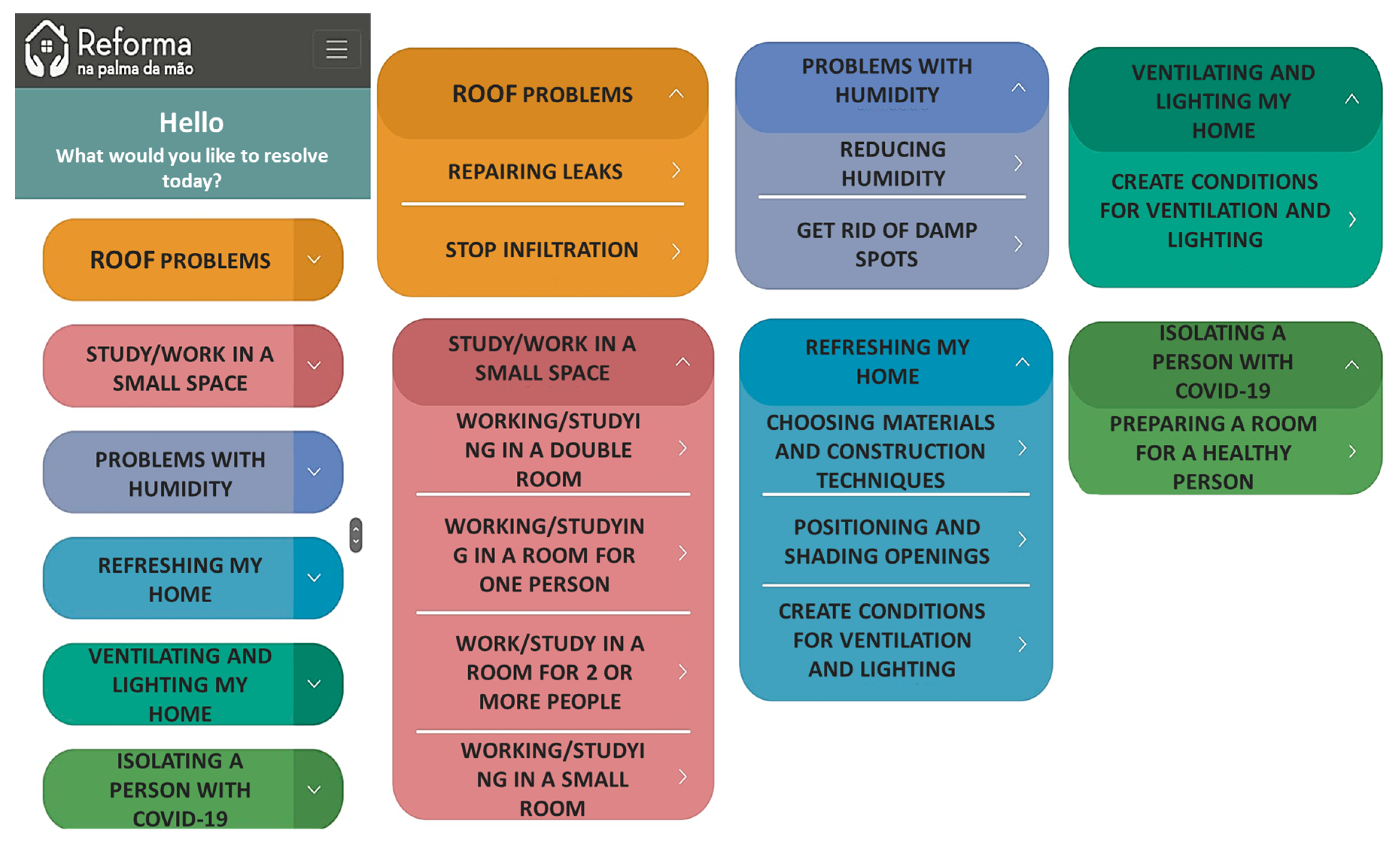
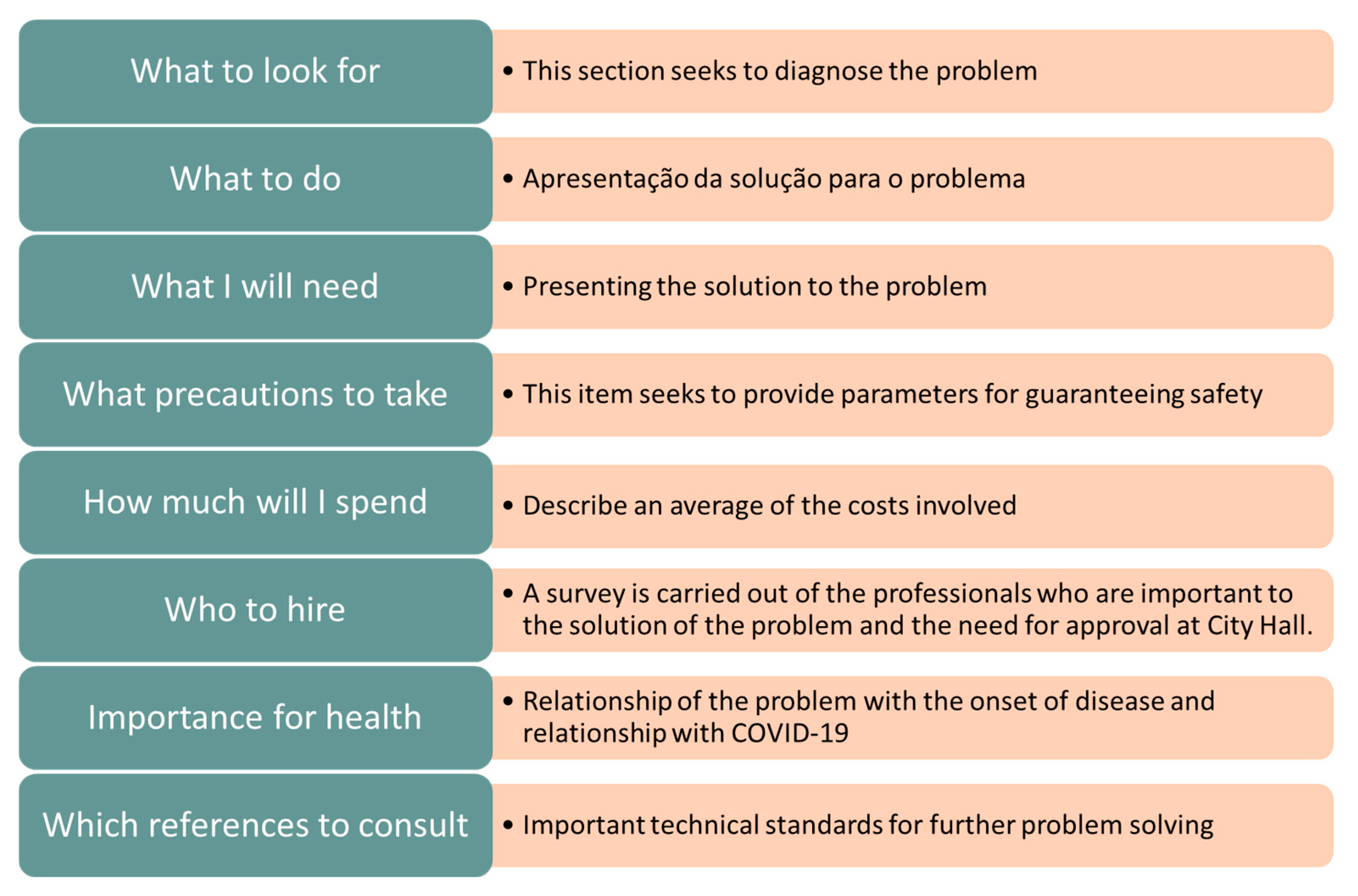
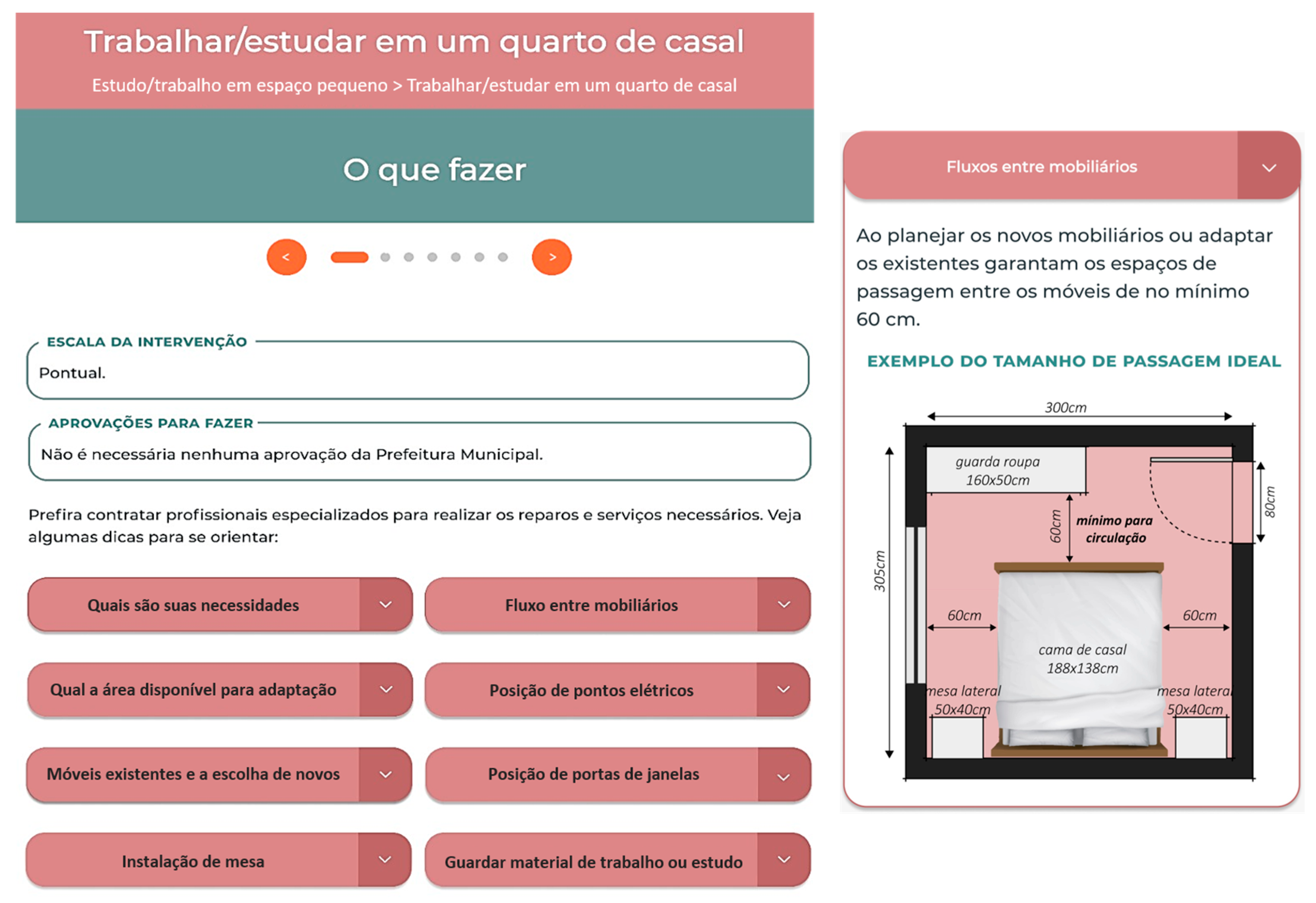
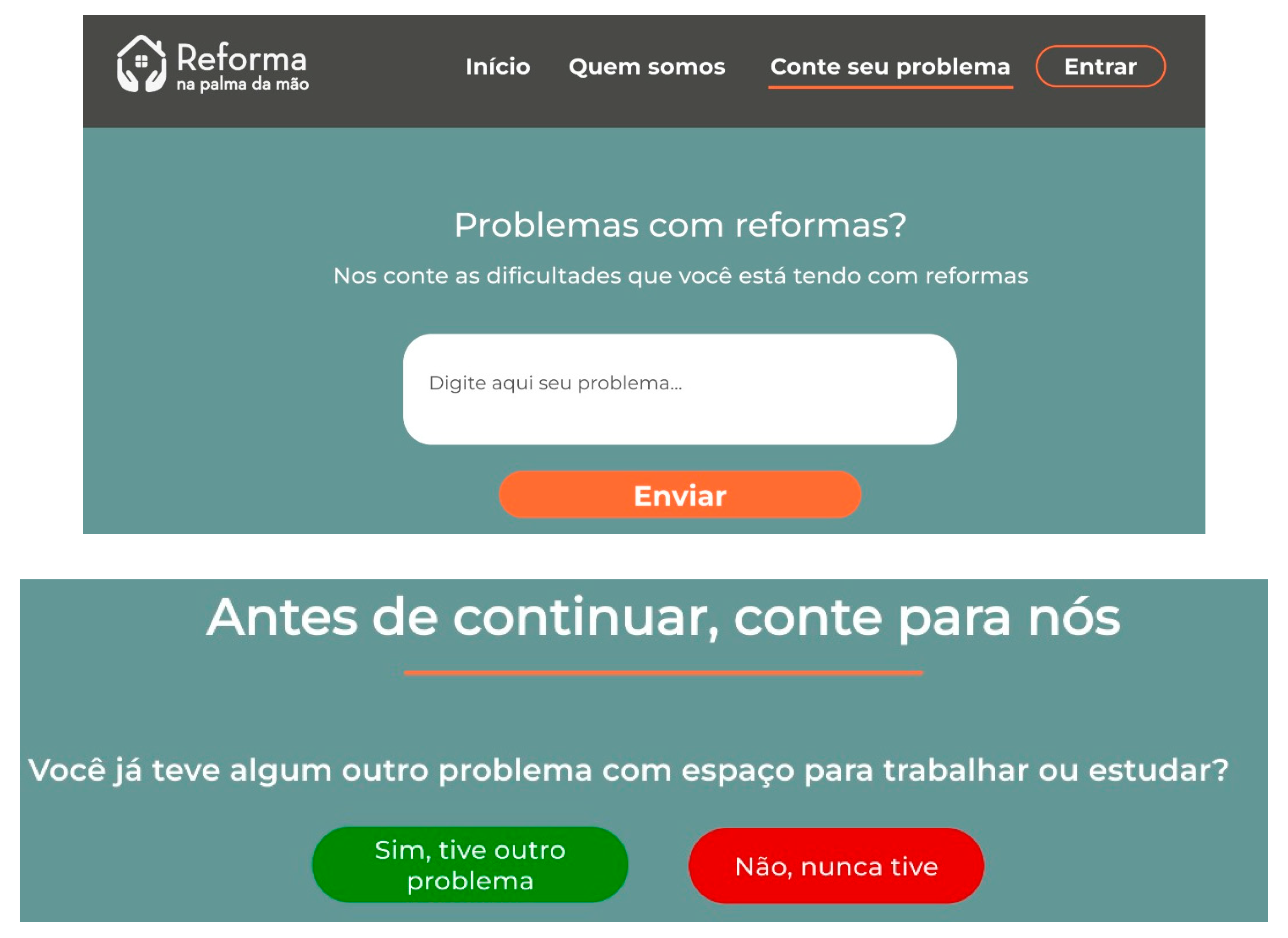

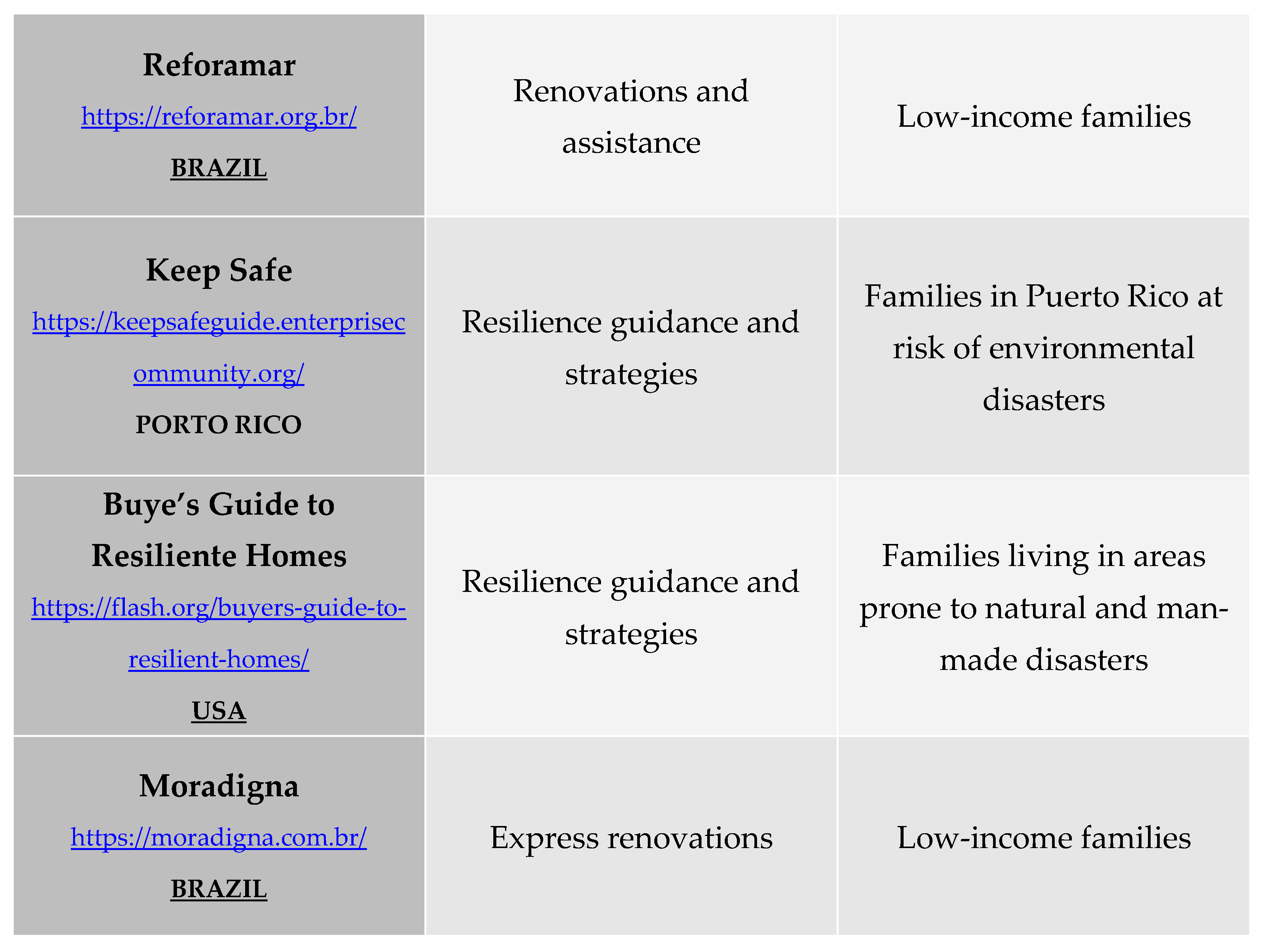
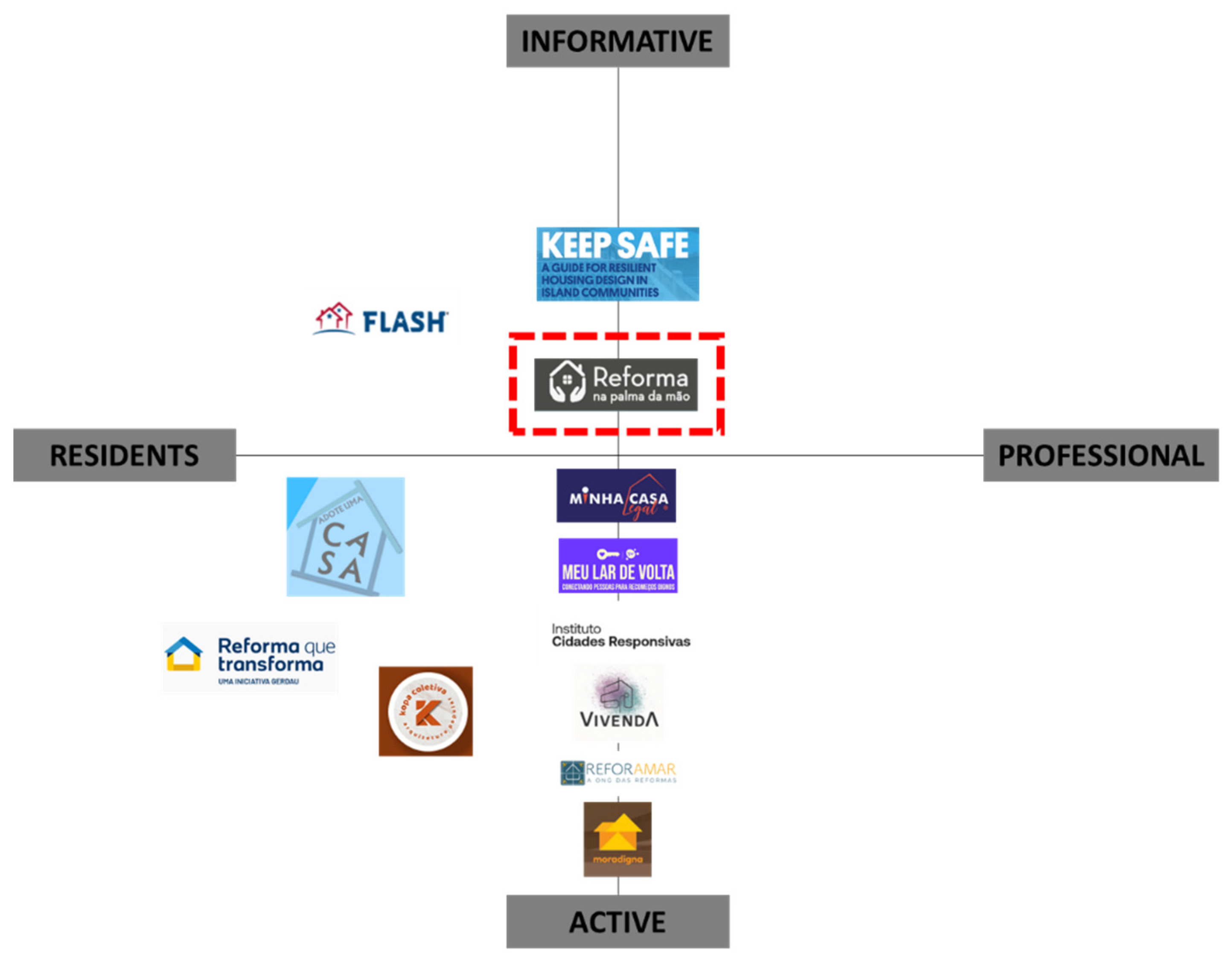
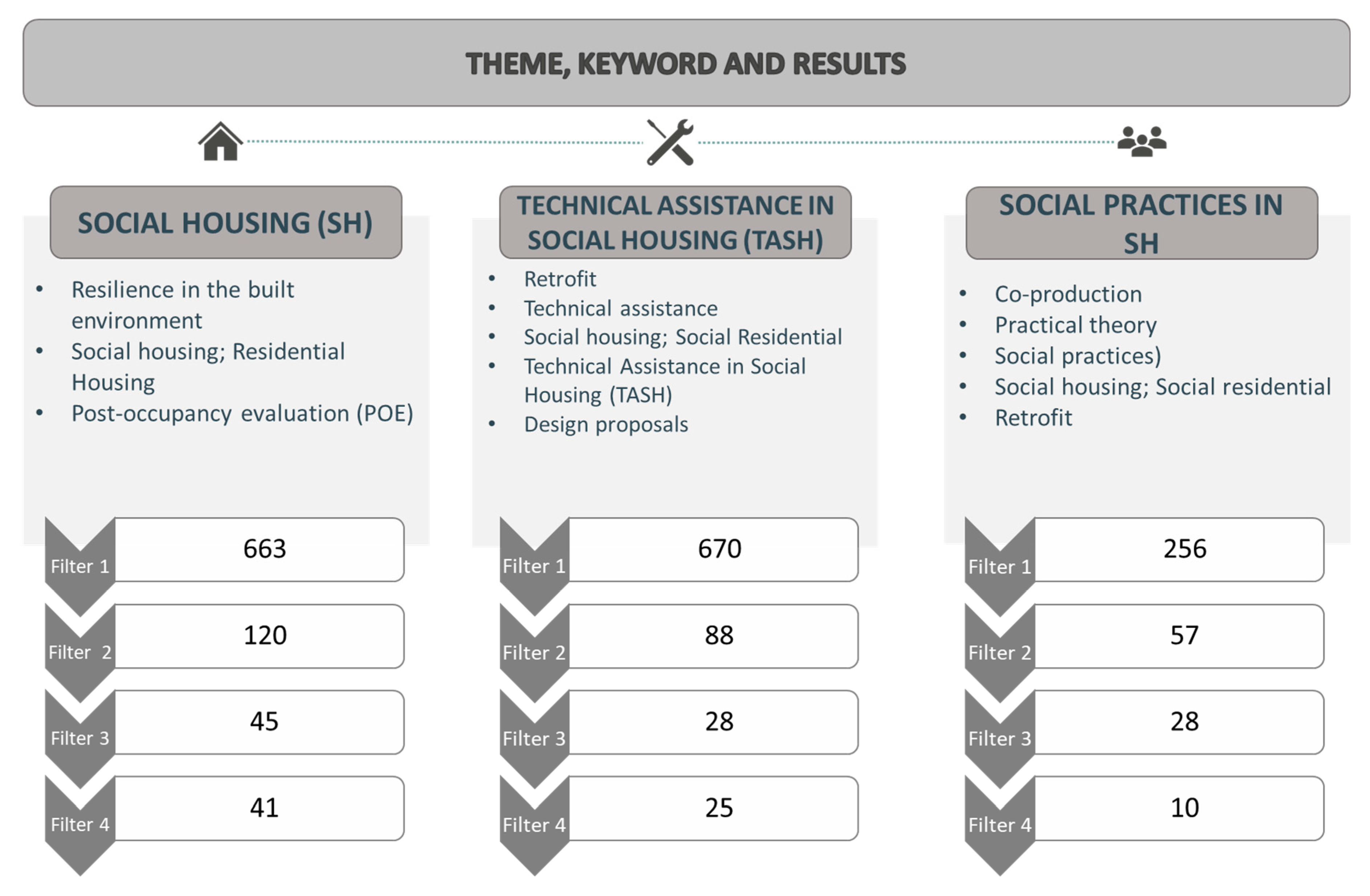
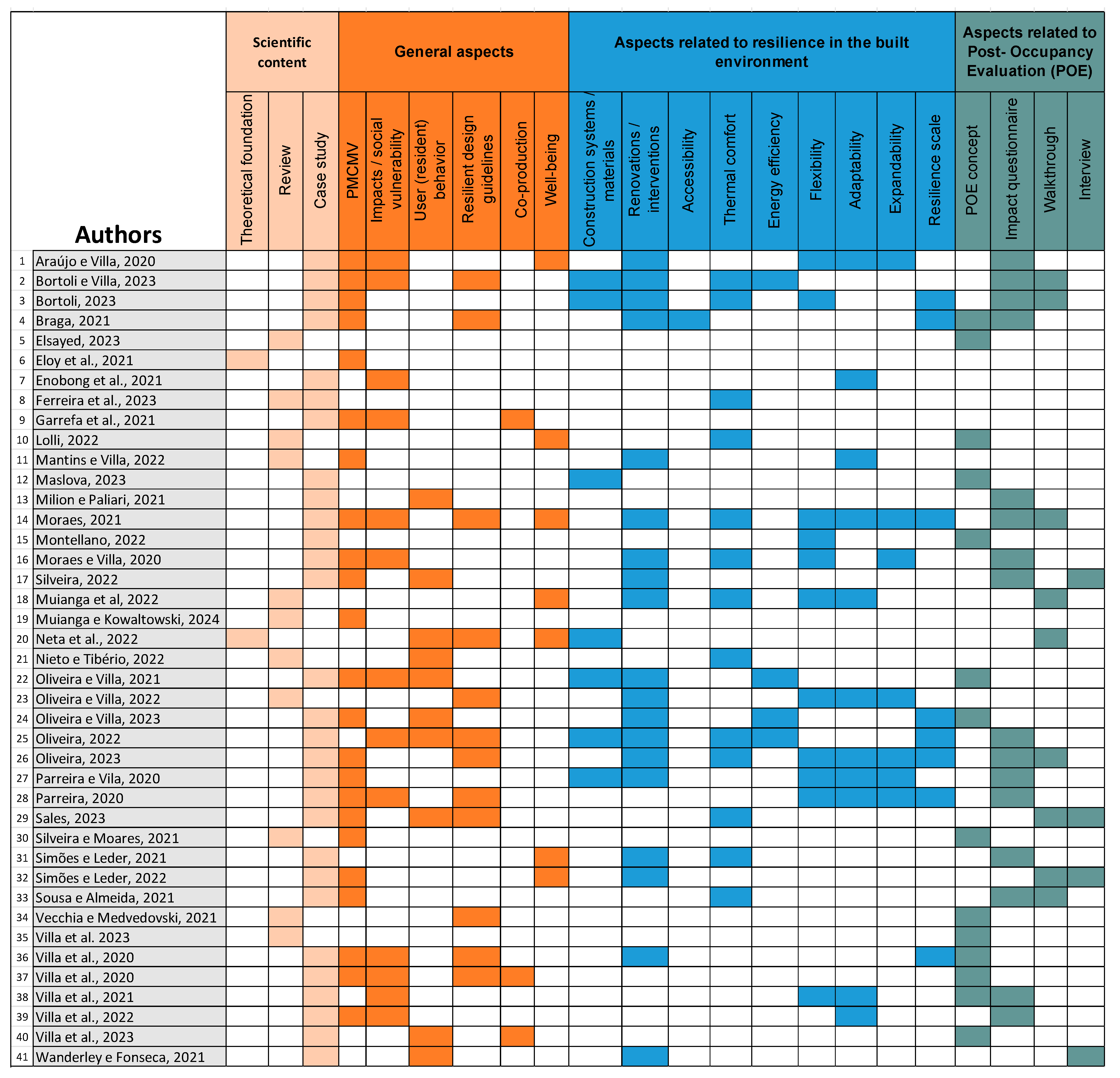
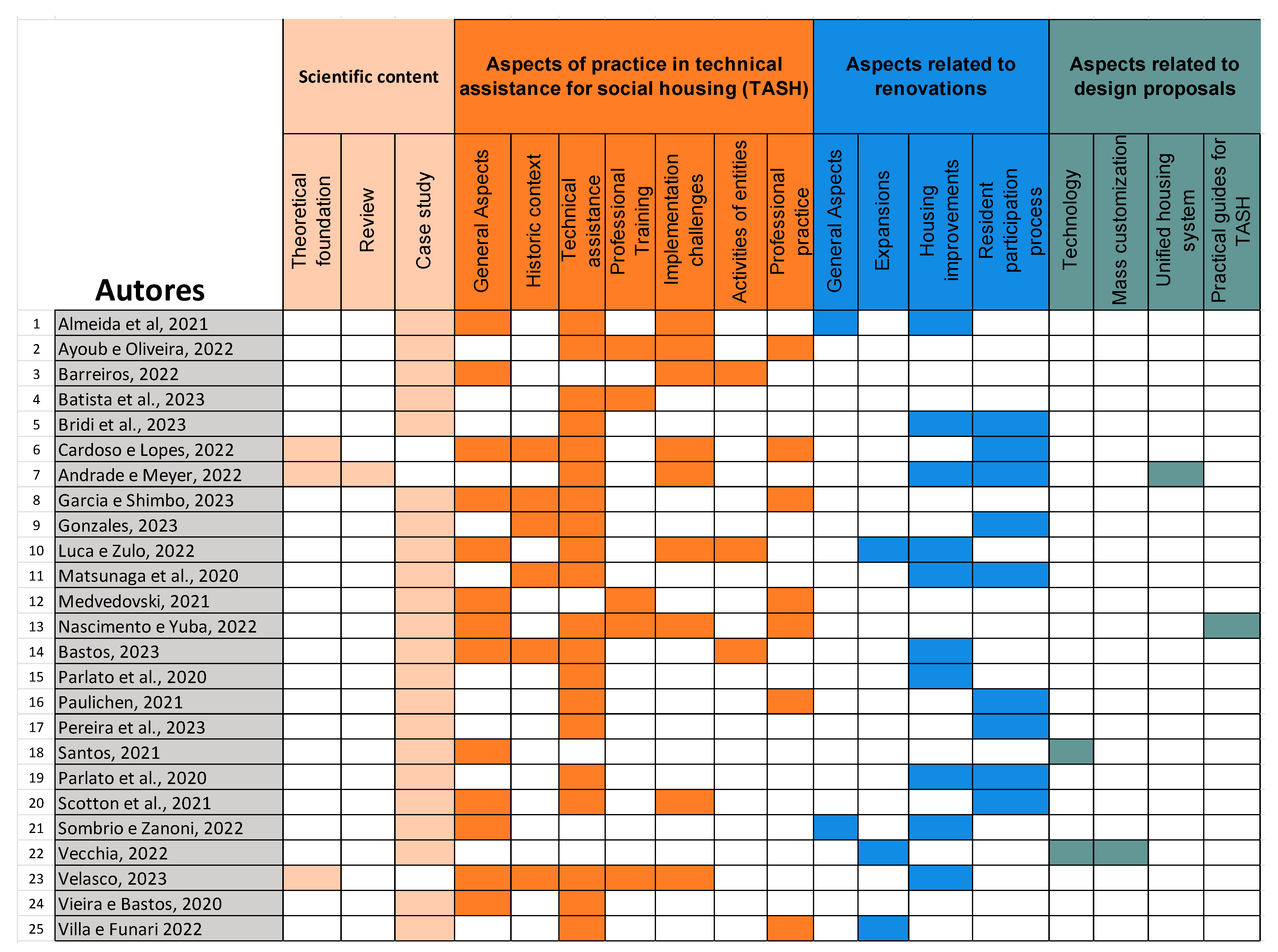

Disclaimer/Publisher’s Note: The statements, opinions and data contained in all publications are solely those of the individual author(s) and contributor(s) and not of MDPI and/or the editor(s). MDPI and/or the editor(s) disclaim responsibility for any injury to people or property resulting from any ideas, methods, instructions or products referred to in the content. |
© 2025 by the authors. Licensee MDPI, Basel, Switzerland. This article is an open access article distributed under the terms and conditions of the Creative Commons Attribution (CC BY) license (https://creativecommons.org/licenses/by/4.0/).
Share and Cite
Valadão, J.A.G.; Villa, S.B. Technical Assistance, Social Practices, and Resilience in Social Housing: An Overview of the Current Scientific Literature. Buildings 2025, 15, 1467. https://doi.org/10.3390/buildings15091467
Valadão JAG, Villa SB. Technical Assistance, Social Practices, and Resilience in Social Housing: An Overview of the Current Scientific Literature. Buildings. 2025; 15(9):1467. https://doi.org/10.3390/buildings15091467
Chicago/Turabian StyleValadão, Jakeline Almeida Garcia, and Simone B. Villa. 2025. "Technical Assistance, Social Practices, and Resilience in Social Housing: An Overview of the Current Scientific Literature" Buildings 15, no. 9: 1467. https://doi.org/10.3390/buildings15091467
APA StyleValadão, J. A. G., & Villa, S. B. (2025). Technical Assistance, Social Practices, and Resilience in Social Housing: An Overview of the Current Scientific Literature. Buildings, 15(9), 1467. https://doi.org/10.3390/buildings15091467





